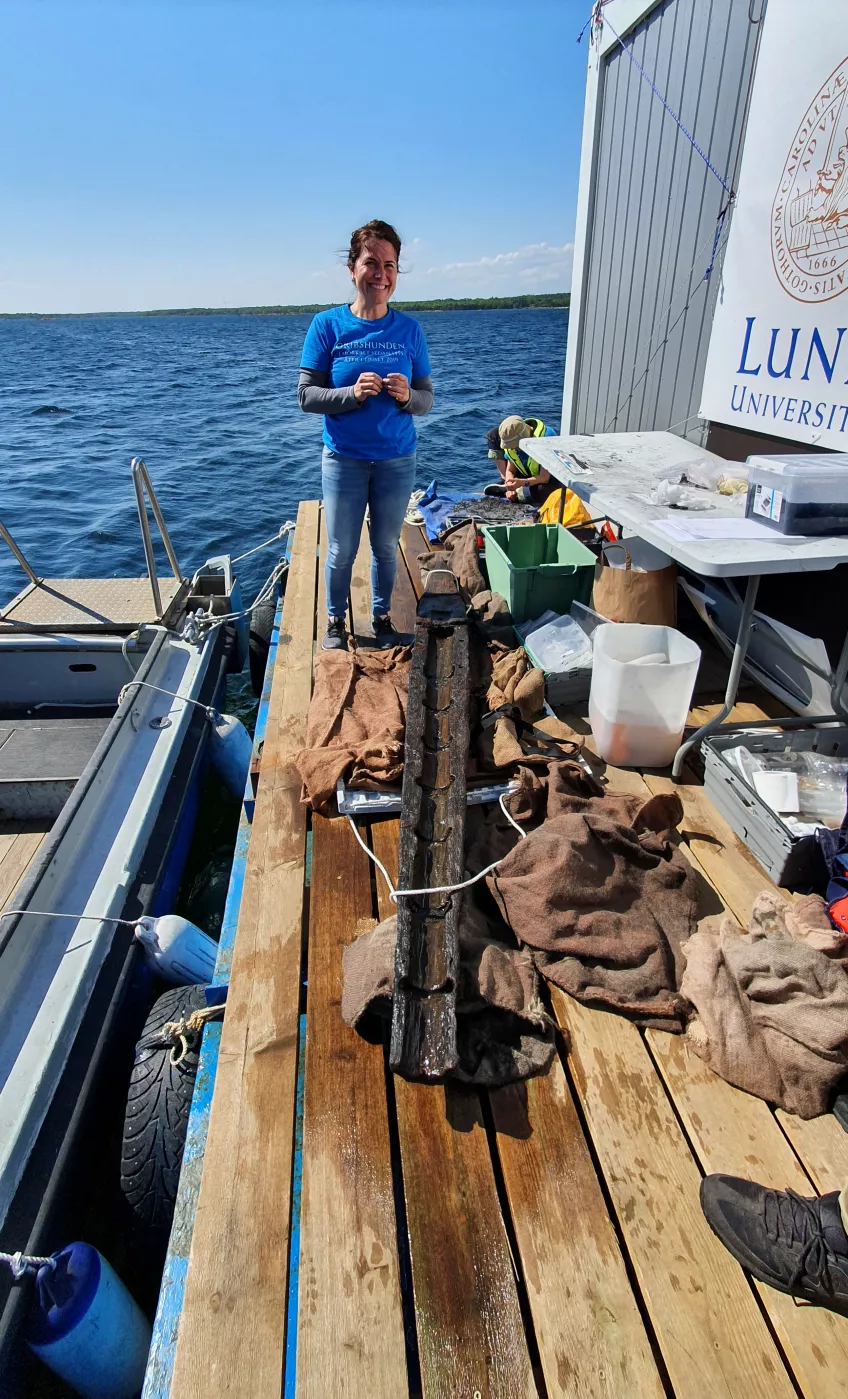In the past, it has been common practice to perform analyses of archaeological sites after excavations have been completed and covered again with soil. But with the revolutionary development of digital technologies, we can now identify archaeological information that was previously invisible to the naked eye.
"As I dig, I am also destroying. Archaeologists must document it before. But with 3D documentation, we can understand the site better," explains Paola Derudas, researcher in archaeology at Lund University.
How did people live in the past? How can we analyse the traces left by our ancestors? The archaeologist's task is to interpret the different remnants found at dig sites in order to understand what people's lives looked like. With the development of 3D technology that can create digital replicas of artefacts, places and monuments, the quality of research has taken great strides.
The Digital Archaeology Lab, known as DARK Lab, at Lund University, brings together researchers who map and analyse sites with the help of combined 3D techno- logy to dig down into history. By creating 3D models of excavation sites and finds, researchers can now revisit the dig site long after it has been refilled, which enables them to ask new questions about the origins of the things they discover and therefore refocus their research.
Online platform open for all
Interactive excavation reports can be created using these new technologies, so that archaeologists can collate weblinks to items, texts and other materials in other col- lections. This creates exciting new possibilities to connect data from different research sites simply and effectively. The online platform can organise and catalogue large volumes of information that can be accessed by more people.
"This is a completely new way of documenting an excavation and opens the way for collaborations with other archaeologists, as well as chemists and geologists, for example," says Paola Derudas.
On the seabed
Under the water's surface, 3D technologies can create detailed pictures from readings, in which it is possible to move freely. Photogrammetry is the process of taking many high-resolution pictures and putting them together to make 3D images. This allows marine archaeologists to observe old, sunken ships or Stone Age villages that are now on the seabed, and through their analysis bring the past to life.
One dig that Paola Derudas has participated in was at the Gribshunden shipwreck outside Ronneby in Blekinge. It was the flagship for King Hans of Denmark, who was on his way to Kalmar in 1495 when it sank. The King managed to get to land, but many of the crew and precious objects sank with the ship to the bottom of the sea. The PI of the Gribshunden project was Dr Brendan Foley.
If we open up our sources, how will that aid our understanding of the past?
When excavating underwater, only divers have access to the site, but they cannot communicate while doing their work. It is also difficult to get a full picture of the shipwreck as the water is often turbid. DARK Lab has software that can process large data sets so that finds become visible in three dimensions.
"Technology enables us to make models of the objects and place them in the positions they were found underwater. This helps archaeologists reflect and test my hypotheses. How do I interpret what I am seeing? In the case of Gribshunden, which is 30 metres long, the professional underwater photographer took 5,000 pictures."
The finds included medieval weapons, handicrafts and luxury items such as spices and nuts. Now, international researchers are analysing the objects to gain better understanding of the medieval period.
"We need to be transparent and give other archaeologists and researchers access to our data. If we open up our sources, how will that aid our understanding of the past?" wonders Paola Derudas.
Engaging the local population
Paola Derudas also sees advantages in involving and engaging the local population in the cultural analyses of where they live. Museum staff can also use the data to combine it in a way that encourages the general public to learn more.
Blekinge Museum and Paola Derudas are working to bring the 3D models to life by explaining the story behind them. One of the stories is about the weapons they found at Gribshunden. The weapons were reconstructed and animated in conjunction with the Humanities Lab at Lund University, and the touchscreen application was developed in collaboration with the Visual Computing Lab at the National Research Council of Italy.
"What did gun carriages look like? How was gunpowder put into a canon and how was it fired? The children who came to visit were fascinated."
Using new 3D technology, models of the objects are made and placed in the underwater positions where they were found. It helps Paola Derudas to reflect and test her hypotheses. The screen shows Gribshunden that sank in 1495.

Easier collaboration
There are many advantages to sharing data, as is clear from Paola Derudas' research. One area that has great potential is in the building of roads or wind farms. Usually, commercial archaeologists are brought in by companies to check if there are any historical remains on the sites. These excavations are conducted with time restraints and there is a risk that what is found cannot be examined properly and valuable knowledge is then lost. But with an open online database enriched with 3D models, Paola Derudas believes the commercial excavations can more easily be linked with archaeological research that provides a deeper understanding of the site.
What do you see around the corner?
"Things are moving fast and deep learning is already
being used to identify as yet unknown archaeological sites, and yet I don't think robots will take over comple- tely. But you know, nothing is objective in archaeology. I will continue to go to locations and make sketches, understand colours and different soil layers. Archaeology is what makes me feel alive."






